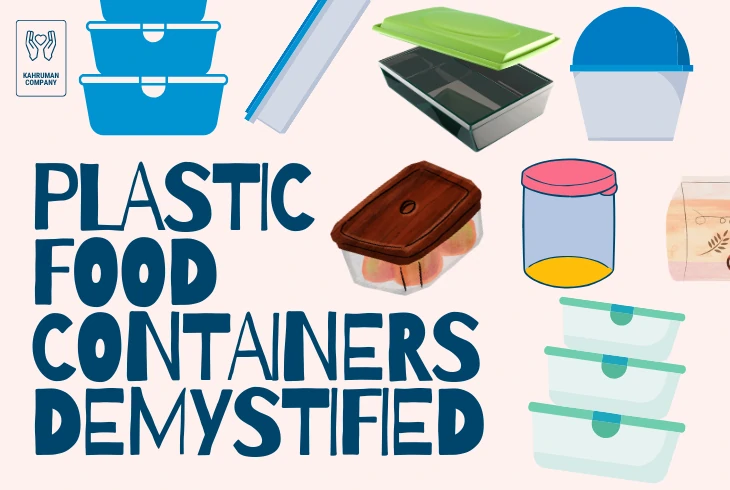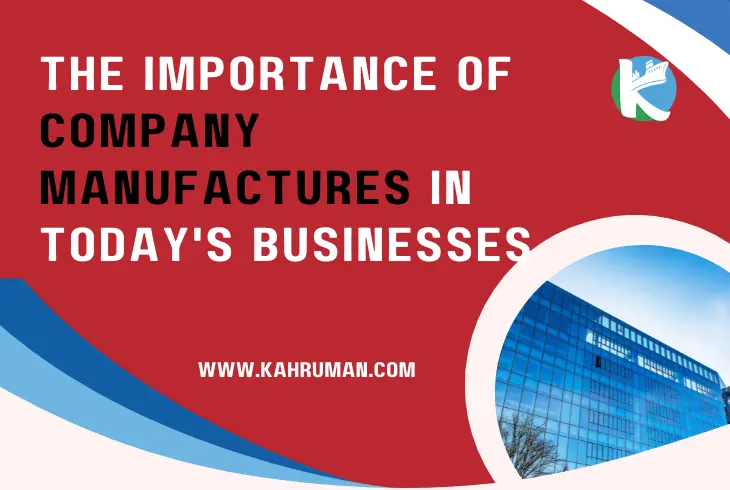Introduction
In the ever-evolving landscape of the food industry, where freshness, convenience, and sustainability reign supreme, the role of plastic food containers has become increasingly pivotal. These unassuming yet essential vessels serve as guardians of flavor and nutrition, ensuring that delectable dishes reach our tables intact and at their peak. This comprehensive guide seeks to illuminate the multifaceted significance of plastic food containers within the culinary world.
The Importance of Plastic Food Containers in the Food Industry
Picture the journey of a freshly prepared meal, from the bustling kitchens of restaurants to the quiet corners of your home. At each step, these containers play a vital role in preserving the quality, taste, and safety of the food they cradle. Whether you're a restaurant owner, a meal prep enthusiast, or simply someone who values the convenience of leftovers, understanding the diverse array of plastic food containers at your disposal can empower you to make informed choices that enhance your culinary experiences.
Plastic food containers play a crucial role in modern society for several compelling reasons:
Preservation of Freshness and Quality: Plastic containers create a protective barrier against external elements, helping to extend the shelf life of food. This is especially important in a world where access to fresh produce and prepared meals may not always be immediate.
Convenience and Portability: In our fast-paced lifestyles, plastic food containers provide a convenient way to store and transport meals. They are lightweight, stackable, and easy to carry, making them ideal for meal prepping, picnics, and on-the-go dining.
Food Safety and Hygiene: Plastic food containers are designed to be non-reactive and resistant to microbial growth, ensuring that stored food remains safe for consumption. They also offer a protective barrier against contaminants, helping to maintain high levels of hygiene.
Reducing Food Waste: By allowing for efficient storage and portioning, plastic food containers can help reduce food waste. Leftovers can be stored safely, extending their usability and minimizing the need for frequent grocery shopping.
Customized Storage Solutions: Plastic containers come in a wide range of sizes and shapes, allowing for tailored storage solutions. This is particularly important in homes, restaurants, and food service industries where space optimization is crucial.
Transparent Visibility: Clear plastic food containers offer visibility of their contents, making it easy to identify what's stored inside. This aids in organization and inventory management, reducing the likelihood of food going unused or forgotten.
Cost-Effectiveness: Plastic food containers are generally more affordable compared to other materials like glass or metal. This makes them an accessible and cost-effective option for individuals and businesses alike.
Reducing Single-Use Plastic Waste (with proper disposal): While single-use plastics have raised environmental concerns, when used responsibly and recycled properly, plastic food containers can be part of a sustainable approach to packaging. Many containers are designed for multiple uses.
Versatility in Applications: Plastic food containers are versatile and can be used for a wide range of foods, including both dry and wet ingredients. They are suitable for freezing, microwaving, and refrigerating, offering flexibility in meal preparation and storage.
In today's fast-paced world, where convenience, safety, and efficiency are paramount, plastic food containers offer practical solutions to meet these needs. It's important, however, to consider sustainability by opting for eco-conscious alternatives and practicing responsible disposal methods. This ensures that plastic food containers continue to be a valuable tool in modern food storage.
Exploring the Variety of Types and Uses
Just as the culinary world is a tapestry of flavors, textures, and cuisines, plastic food containers come in a multitude of shapes, sizes, and designs, each tailored to specific purposes. From the trusted plastic containers with snug-fitting lids to the crystal-clear options that offer tantalizing glimpses of their contents, the choices seem endless. Plastic food containers have a wide range of uses, both in domestic and commercial settings, owing to their convenience, versatility, and practicality. Here are some common applications:
Storage and Organization: They are primarily used for storing food, helping to keep it fresh and free from contaminants. This applies to both raw ingredients and prepared meals.
Meal Preparation and Portion Control: Plastic containers are essential for meal prepping. They allow for the portioning and storage of meals in advance, promoting healthy eating habits and saving time during busy periods.
Takeout and Food Delivery: Restaurants and food service businesses use plastic food containers for packing takeout orders. They are designed to securely hold a variety of dishes, from soups to salads and hot entrees.
Catering and Events: Plastic containers are invaluable in the catering industry. They are used for preparing, storing, and transporting large quantities of food for events, parties, and gatherings.
Freezing and Refrigeration: They are designed to withstand low temperatures, making them suitable for both freezing and refrigerating food. This helps extend the shelf life of perishable items.
Display and Presentation: Clear plastic food containers are often used for displaying food items in delis, bakeries, and food markets. They allow customers to see the contents, enticing them to make a purchase.
Transporting and Commuting: Individuals use plastic food containers to carry meals to work, school, or other locations. They are designed to be leak-resistant and are easy to transport.
Microwaving and Reheating: Many plastic food containers are microwave-safe, allowing for easy reheating of leftovers. This convenience is particularly valuable for those with busy schedules.
Specialized Uses: Certain types of plastic food containers, such as food grade buckets, are designed for specific applications. They may be used for marinating, fermenting, or storing bulk quantities of ingredients.
Home Organization: Beyond the kitchen, plastic containers have various uses in organizing items like craft supplies, toys, office supplies, and more.
Outdoor Activities: They are popular food containers for outdoor activities like camping, picnics, and barbecues, where durable, lightweight storage solutions are essential.
Hospitality and Healthcare: Plastic food containers are used in healthcare settings for storing and dispensing patient meals. They are designed with safety and sanitation in mind.
Industrial and Manufacturing: In industrial settings, plastic food containers may be used for processes like mixing, blending, or storing ingredients in large quantities.
The diverse range of applications for plastic food containers demonstrates their importance in both everyday life and various industries. It's crucial to choose the right type of container based on the specific requirements of the task at hand, ensuring that food remains fresh, safe, and convenient to access.
As we embark on this journey through the world of plastic food containers, we will delve deeper into the intricacies of their design, functionality, and eco-conscious options. Join us as we navigate the diverse landscape of plastic food containers, discovering their hidden virtues and uncovering the perfect match for your culinary needs.
Section 1: Types of Plastic Food Containers
When it comes to choosing the right plastic food container, understanding the various types available is crucial. Whether you're a professional chef looking for reliable storage solutions or a home cook seeking convenient options, this section will guide you through the diverse array of containers tailored to specific needs.
Plastic Containers with Lids: These containers come with fitted lids that create an airtight seal, ensuring the freshness and quality of the stored food.
Food Grade Buckets: These are sturdy, large containers, often used in commercial kitchens or food processing industries for storing bulk quantities of ingredients or prepared dishes.
Disposable Food Containers: Typically used for takeout orders or in catering, disposable containers are convenient one-time use options for transporting food.
Clear Plastic Food Containers: These containers are transparent, allowing for easy visibility of the contents without the need to open them. They are often used for display and quick identification.
Large Plastic Food Containers: These containers have a generous capacity and are ideal for bulk storage of ingredients or for use in professional kitchens.
Square Plastic Food Containers with Lids: The square shape is designed for efficient use of storage space, as they can be easily aligned and stacked.
Small Plastic Food Containers: These containers are typically used for portion control, holding smaller quantities of ingredients, sauces, or individual servings.
As you explore the types of plastic food containers, keep in mind your specific culinary needs and preferences. Each type serves a distinct purpose, ensuring that your ingredients and finished dishes are stored optimally for freshness and convenience. In the following sections, we'll delve deeper into the features and benefits of these containers, providing you with the knowledge needed to make informed choices.
Section 2: Features and Benefits of Plastic Food Containers
In this section, we'll delve into the specific features and benefits that plastic food containers offer, aligning them with the needs of consumers, chefs, and food enthusiasts. Understanding the unique features and benefits of plastic food containers is essential for making informed choices that align with your specific culinary needs. Understanding these aspects will help you make informed choices based on your unique requirements.
Plastic Food Containers with Lids:
Features:
Airtight Seal: These containers come with fitted lids that create an airtight seal, preventing air and moisture from entering and ensuring food stays fresh.
Variety of Sizes: Available in various sizes to accommodate different quantities of food, from individual portions to larger quantities for meal prep or storage.
Microwave and Freezer Safe: Many are designed to be microwave and freezer safe, allowing for easy reheating and storing of leftovers.
Stackable: They are often designed to be stackable, optimizing storage space in your pantry or refrigerator.
Durable Material: Made from sturdy and durable plastic materials that are resistant to cracks and breakage.
Benefits:
Preservation of Freshness: The airtight seal provided by the lids helps preserve the freshness and flavor of food, making it ideal for storing both raw ingredients and prepared dishes.
Convenient and Versatile: They are suitable for a wide range of foods and can be used for meal prepping, leftovers, and more. Their versatility makes them a kitchen essential.
Reduces Food Waste: By keeping food fresh for longer, these containers can help reduce food waste by allowing you to store and consume leftovers or perishable items before they spoil.
Safe and Hygienic: The sealed lids help protect food from contaminants, ensuring it remains safe for consumption. They are also easy to clean and maintain.
Time-Saving: Preparing meals in advance and storing them in these containers with lids can save time on busy days, making it a convenient solution for meal planning.
Clear Plastic Food Containers:
Features:
Transparency: These containers are transparent, allowing you to easily see the contents without the need to open them, which is especially useful for quick identification and organization.
Diverse Sizes and Shapes: Available in a wide range of sizes and shapes to suit different storage needs, from small containers for condiments to larger ones for salads or baked goods.
Durable and Lightweight: Made from durable plastic materials that are lightweight, making them easy to handle and transport.
Stackable and Nestable: Designed for efficient storage, these containers can often be stacked or nested when not in use, saving space in your kitchen.
Benefits:
Efficient Inventory Management: The transparency of these containers makes it easy to keep track of your food inventory, ensuring that nothing goes to waste and reducing the likelihood of duplicates.
Showcasing Contents: Ideal for displaying food items in commercial settings like delis or bakeries, where presenting the product to customers is important for making sales.
Safe for Microwave Use: Many clear plastic containers are microwave-safe, allowing for easy reheating of food without the need to transfer it to another dish.
Large Plastic Food Containers:
Features:
Generous Capacity: These containers are designed to hold larger quantities of food, making them ideal for bulk storage or for use in commercial kitchens and catering services.
Durable Construction: Made from robust materials to support the weight of larger quantities of food and withstand the demands of professional kitchen environments.
Secure Lids: Like smaller containers, large plastic food containers often come with lids that provide a secure seal for preserving the freshness of the stored food.
Benefits:
Efficient Storage: Large containers allow for efficient storage of ingredients, prepared dishes, or bulk quantities of food. They help maximize space in commercial kitchens and catering operations.
Time-Saving: They can streamline food preparation processes in professional kitchens by allowing for the efficient organization and storage of ingredients.
Square Plastic Food Containers with Lids:
Features:
Space-Saving Design: The square shape is designed to optimize storage space, especially in cupboards or refrigerators where square containers can be easily aligned and stacked.
Secure Lids: Like other plastic food containers, those with square shapes often come with fitted lids that create an airtight seal for food preservation.
Versatility: Suitable for a variety of food items, these containers can be used for everything from dry ingredients to prepared meals.
Benefits:
Efficient Use of Space: The square shape allows for efficient use of cupboard or refrigerator space, especially when compared to round containers that may leave gaps.
Stackability: Square containers can be easily stacked, allowing for even more efficient use of space and easy access to the contents.
As you explore the features and benefits of these plastic food containers, consider your specific needs and preferences. Each type offers unique advantages that cater to different culinary scenarios, making your food storage, preparation, and presentation more efficient and enjoyable. In the upcoming sections, we'll delve into sourcing options and affordability, further assisting you in meeting your requirements.
Section 3: Sourcing and Wholesale Options for Plastic Food Containers
Finding the right source for plastic food containers is pivotal in ensuring that you receive high-quality, reliable products that meet your specific needs. In this section, we'll guide you through the process of sourcing and highlight KAHRUMAN, a trusted wholesale company specializing in Turkish high-quality products.
KAHRUMAN: Your Trusted Source for High-Quality Plastic Food Containers
When it comes to sourcing top-tier plastic food containers, look no further than KAHRUMAN. As a leading wholesale company specializing in Turkish high-quality products, they have garnered a reputation for excellence in both product quality and customer service. With a diverse range of options designed to meet various culinary needs, KAHRUMAN stands as a reliable partner for businesses and individuals seeking premium plastic food containers.
Choosing Quality: Factors to Consider
Quality is paramount when it comes to plastic food containers. Consider factors such as material composition, thickness, and seal integrity. KAHRUMAN's products excel in all these areas, providing containers that not only meet industry standards but exceed them, ensuring your food remains fresh and secure.
Average Price Range for Plastic Food Containers
Understanding the average price range for plastic food containers can help you budget effectively for your culinary needs. KAHRUMAN offers competitive pricing without compromising on quality, ensuring you receive excellent value for your investment.
Bulk Ordering Benefits with KAHRUMAN
When it comes to sourcing plastic food containers in large quantities, KAHRUMAN's wholesale options provide unbeatable advantages. Enjoy cost-effective pricing, streamlined logistics, and access to a diverse range of high-quality products to meet your business or personal needs.
Customization Options for Your Specific Needs
KAHRUMAN understands that different culinary endeavors have unique requirements. They offer customization options, allowing you to tailor plastic food containers to your specific needs, whether it's branding for your business or specialized sizing for your kitchen.
Section 4: Affordability and Sustainability of Plastic Food Containers
Understanding the balance between affordability and sustainability is crucial when it comes to selecting plastic food containers. This section provides insights into how KAHRUMAN, a trusted wholesale company specializing in Turkish high-quality products, offers solutions that meet both criteria.
KAHRUMAN: Quality and Affordability in Harmony
Striking a balance between quality and cost is a top priority for consumers and businesses alike. KAHRUMAN offers a range of plastic food containers that are not only high in quality but also cost-effective. Their commitment to affordability ensures that you can access top-tier products without breaking the bank. Their products are designed to meet the rigorous demands of the food industry while remaining accessible for businesses of all sizes.
Factors Influencing the Price of Plastic Food Containers
Understanding the elements that contribute to the price of plastic food containers can help you make informed decisions. Factors such as material type, size, and additional features can influence costs. KAHRUMAN's transparent pricing model ensures that you get the best value for your investment.
Sustainability in Plastic Food Containers: Making Informed Choices
Sustainability is a paramount concern in today's world. KAHRUMAN recognizes this and provides a range of eco-friendly plastic food containers that minimize environmental impact. These containers are crafted with materials and production processes that prioritize sustainability without sacrificing performance. KAHRUMAN is committed to offering eco-friendly plastic food containers that are both reusable and recyclable. By choosing their products, you contribute to a more sustainable food storage ecosystem.
Recyclability and Disposal Considerations
KAHRUMAN's commitment to sustainability extends beyond product design. They prioritize materials that are easily recyclable, promoting responsible disposal practices. Understanding how to recycle and dispose of plastic food containers properly ensures that they have a minimal ecological footprint.
Bulk Purchasing for Affordability and Sustainability
KAHRUMAN offers bulk purchasing options for businesses looking to stock up on eco-friendly plastic food containers. This not only helps in reducing the overall cost per unit but also minimizes packaging waste, aligning with sustainability goals.
By choosing KAHRUMAN as your source for plastic food containers, you're not only investing in high-quality products but also contributing to a more sustainable future. Their commitment to affordability and sustainability ensures that businesses and individuals can make responsible choices without compromising on quality. Explore KAHRUMAN's range of affordable and eco-friendly plastic food containers to take a step towards a greener, more cost-effective future.










